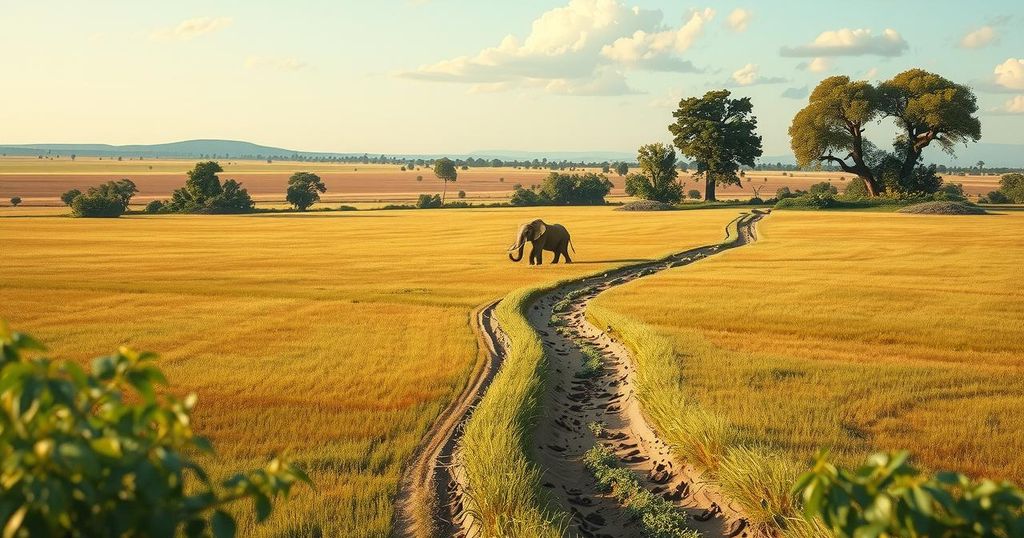Confronting Human-Elephant Conflict in Kenya: A Struggle for Coexistence

Kenyans are increasingly confronting the issue of elephants damaging crops due to factors like drought and population growth. The destruction stemming from human-wildlife conflict has become the leading cause of illegal elephant fatalities in the region. Efforts to foster coexistence through innovative deterrents and education are crucial to addressing this pressing issue, as many farmers struggle to protect their livelihoods against elephant raids.
Kenya faces significant challenges due to elephants encroaching upon agricultural lands, largely attributed to drought and depleted resources. Through this struggle, many elephants, including one named Pardamat, exemplify the impacts of human-wildlife conflict. Pardamat’s story, shared by Edwin Lusichi, the head keeper at the Sheldrick Wildlife Trust, reveals the dire circumstances elephants encounter when they are victimized by human actions, as Pardamat was found beside his deceased mother, who suffered injuries inflicted by humans.
The rising human population, in conjunction with climate change, leads to increased competition for resources among humans and elephants, specifically for space, food, and water. The intrusion of elephants into agricultural areas results in crop destruction and distress for farmers, who may resort to retaliatory measures, including harming the animals in an attempt to safeguard their livelihoods. “The shopping malls, the roads, have been built on lands that used to belong to elephants and their migration routes,” stated Lusichi, emphasizing the critical resource scarcity leading to these confrontations.
Conservationists indicate that the establishment of new commercial farms, particularly those cultivating exports like avocados, has intensified the issue. Each year, numerous individuals suffer injuries or fatalities due to human-elephant confrontations. In response, rangers in southern Kenya routinely patrol agricultural land, as Daniel Kutata from Big Life Foundation noted, stating, “On a busy night, on a dry season, even 20 elephants can come and raid.”
To protect both farmers and elephants, initiatives such as installing electric fences have been employed, proving effective yet not foolproof, as some elephants manage to circumvent these barriers. Affected farmers, like one who lost a substantial amount of tomatoes worth approximately $4,000, face dire economic challenges as their crops are destroyed by the elephants.
Farmers, like Jonas Makima, have resorted to innovative deterrents against elephants, implementing beehive fences with support from Save the Elephants. Research shows that elephants avoid farmlands up to 86% of the time when bees are present, underscoring the efficacy of this method. Makima’s struggle exemplifies the ongoing battle faced during crop season, where every night constitutes a fight to protect vital resources for family sustenance and children’s education.
Looking forward, as Kenya’s population is projected to double by 2070, efforts are being made to foster coexistence between humans and elephants. Education is paramount in facilitating this balance, as Lusichi articulated, stressing the importance of recognizing the rights of wildlife to exist peacefully within their habitats amidst human development.
In conclusion, the conflict between humans and elephants in Kenya is primarily driven by environmental challenges and increasing human encroachment on traditional elephant habitats. Innovative solutions, such as beehive fencing, alongside farmer education programs, are crucial in promoting peaceful coexistence. As both the human population and agricultural demands grow, the need for effective strategies that safeguard both livelihoods and wildlife becomes ever more pressing.
Original Source: abcnews.go.com






